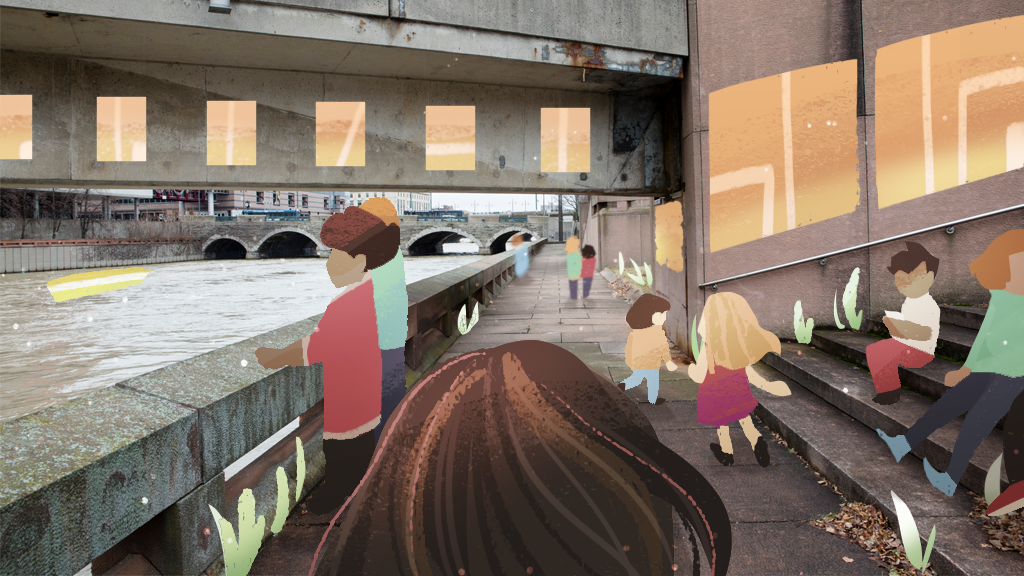In January 2018, Governor Andrew Cuomo announced $50 million in state support to revitalize the Genesee riverbank. Along with other funding, this support has jump-started the $500 million “ROC the Riverway” program that aims to completely revamp the Rochester riverside.
The program encompasses planned projects spanning from the University of Rochester to High Falls, with a heavy focus on downtown, according to Mayoral Chief of Staff Alex Yudelson. The entire program consists of 27 projects, with priority being given to the revitalization and remodeling of Charles Carroll Plaza, the Rochester Convention Center, Blue Cross Arena, the Broad Street Aqueduct and expansion of the Genesee Riverway Trail. However, as Yudelson pointed out, these priorities are subject to change.
Formation of the Plan
In 2016, Rochester was announced as one of four cities to receive the Rose Fellowship, awarded by the National League of Cities. Fellowship cities receive aid to assist them in developing and capitalizing upon their key land-use challenges. Rochester’s challenges were to expand upon Main Street, the Broad Street Aqueduct and the Riverway. The mayor’s office agreed.
“If you look at the buildings and the parks, they all seem to face away from the [Genesee] River,” Yudelson pointed out. “In many ways, this city has turned its back to the river.”
To rectify the situation, Yudelson put together a team of city planners, architects and engineers. They recognized a severe loss of opportunity with the riverway and began to look at finding a solution using the pre-existing Local Waterfront Revitalization Program as a starting point for their investigation.
This group then began looking at areas along the riverfront that held the potential to boost the city’s appeal and encourage greater engagement in Rochester’s recreational life. A plan was formulated and repeatedly revised and was eventually brought to the desk of Vincent Esposito, the regional director of Empire State Development (ESD), a state-led organization devoted to promoting economic development.
Esposito was very passionate about the proposal as well. From the moment it reached his desk, he devoted time and energy into making it the best possible plan, working endlessly to see it come to fruition.
“Rochester was built with the river at its backdoor, not its front,” Esposito explained. “Having a 100-foot waterfall is completely unique — it’s one of the most dramatic waterfalls in an urban setting anywhere in the world. It’s been used for industry in the past, but hasn’t been used heavily as an attraction.”
Rochester has repeatedly ignored the river as a source of attraction and lifestyle. Esposito looked to change that.
Yudelson and Esposito worked together over the past several months to solidify the plan before Esposito took it forward to the office of Governor Cuomo for approval. After receiving Cuomo’s approval, funding was announced, stemming from the ESD.
"This city has turned its back to the river."
Upcoming Projects
As for the plan itself, the project is divided largely into three regions: south river, downtown and high falls. The city looks to revitalize each of these areas to make them more accessible and attractive to both locals and visitors. In charge of its implementation is a 12-person advisory board co-chaired by the President of the Greater Rochester Chamber of Commerce Bob Duffy, and the President of Monroe Community College Anne Kress.
However, the board won’t be the only ones with a voice in the plans, moving forward. The opinions and ideas of the locals are also of high importance to the projects. Thus, many of the plans put forward by the ROC the Riverway project are flexible and open to change.
“The governor is wanting to engage the community as a whole so as many voices as possible can come to a consensus,” Esposito said.
Other notable projects included in the ROC the Riverway plans are a tree-top trail, a bridge overtop High Falls, remodeling of the Library North Terrace, sweeping landscaping work around the river's shoreline and more.
Both Yudelson and Esposito stressed that while the project is expensive, it is a long-term investment. The project has been broken down into four phases stretching out over the next decade. By revitalizing the riverway, the city hopes to bring in additional funding and attractions in the future.
Overall, this project means a surge of youth and energy is coming to Rochester for its residents to enjoy.
More information on the ROC the Riverway project can be found on their website.








